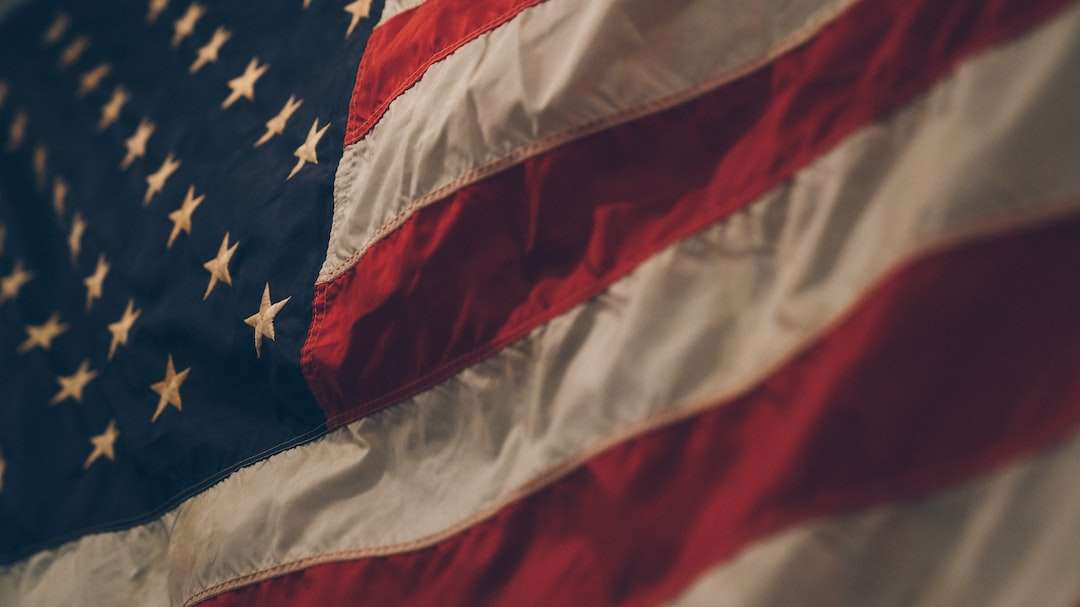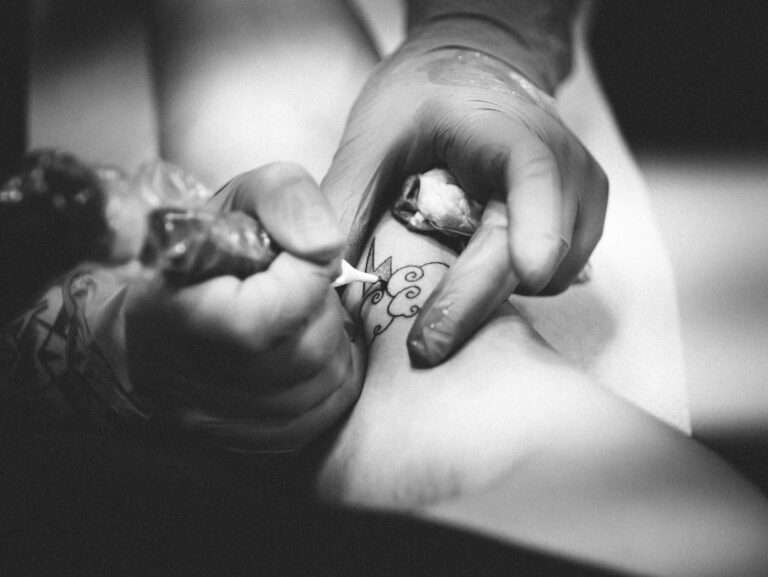Exploring the Rich Meanings Behind American Traditional Tattoos

American traditional tattoos have a rich history and deep symbolism that make them a beloved and enduring style in the world of tattooing. From their origins in Native American and Polynesian cultures to their evolution and influence over time, understanding the history and symbolism behind these designs is crucial for both tattoo artists and wearers. In this article, we will explore the fascinating history of American traditional tattoos, the symbolism behind classic designs, the influence of Sailor Jerry, the evolution of the style over time, its connection to military and gang culture, its regional variations, the pioneering women in the industry, its modern interpretation in contemporary art, and predictions for its future.
The History of American Traditional Tattoos: A Brief Overview
American traditional tattoos have their roots in Native American and Polynesian cultures. These cultures used tattoos for various purposes, such as spiritual protection, identification within a tribe, and rites of passage. In the 18th and 19th centuries, Western tattooing was introduced to America through sailors who had been exposed to Polynesian tattooing during their travels. These early tattoos were often simple designs such as anchors or nautical symbols.
It was in the early 20th century that American traditional tattoos truly began to take shape as a distinct style. Artists like Norman Collins, also known as Sailor Jerry, played a significant role in developing this style. Sailor Jerry drew inspiration from his experiences as a sailor and incorporated bold lines, vibrant colors, and iconic designs into his work. His style became synonymous with American traditional tattoos and continues to influence artists today.
The Symbolism Behind Classic American Tattoo Designs
Classic American tattoo designs are known for their boldness and simplicity. Each design carries its own unique symbolism, which adds depth and meaning to the tattoo. For example, anchors symbolize stability and strength, while eagles represent freedom and courage. Roses are often associated with love and beauty. Understanding the symbolism behind these designs is important for both the tattoo artist and the wearer. It allows the artist to create a tattoo that accurately represents the wearer’s intentions and desires, while also ensuring that the wearer understands the meaning behind their chosen design.
The Influence of Sailor Jerry on American Traditional Tattoos
Sailor Jerry, born Norman Collins, was a legendary tattoo artist who had a profound impact on American traditional tattoos. He was known for his bold and iconic designs, which often featured nautical themes, pin-up girls, and patriotic symbols. Sailor Jerry’s style was characterized by its clean lines, vibrant colors, and attention to detail. He also developed innovative techniques, such as using a single needle to create fine lines and shading.
Sailor Jerry’s influence can still be seen in American traditional tattoos today. Many artists continue to draw inspiration from his designs and techniques, incorporating them into their own work. His legacy has helped to preserve and popularize the American traditional style, ensuring that it remains a beloved and respected tradition in the world of tattooing.
The Evolution of American Traditional Tattoos over Time
American traditional tattoos have evolved and changed over time, reflecting shifts in popular culture and advancements in tattooing technology. In the early days of American traditional tattoos, designs were often simple and limited in color due to the limitations of available pigments. However, as tattooing technology improved, artists were able to create more intricate designs with a wider range of colors.
In recent decades, there has been a resurgence of interest in American traditional tattoos. Artists have pushed the boundaries of the style, incorporating elements from other tattoo styles and cultures. This fusion of styles has resulted in unique and innovative designs that still maintain the boldness and simplicity of American traditional tattoos.
The Connection between American Traditional Tattoos and the Military

Tattoos have a long history in military culture, and American traditional tattoos have played a significant role in this tradition. In the early 20th century, many sailors and soldiers got tattoos as a way to commemorate their service or to express their patriotism. American traditional designs, with their bold and iconic symbols, were particularly popular among military personnel.
American traditional tattoos continue to hold a special significance in military culture today. They serve as a way for service members to honor their commitment and show pride in their branch of the military. Designs such as eagles, anchors, and flags are commonly seen in military tattoos, symbolizing bravery, loyalty, and patriotism.
The Role of American Traditional Tattoos in Gang Culture
Tattoos have also played a significant role in gang culture, with different designs and symbols representing various gang affiliations and hierarchies. American traditional tattoos have been used in gang culture to convey messages of loyalty, identity, and intimidation.
Certain American traditional designs, such as teardrops or spider webs, have specific meanings within gang culture. These tattoos often represent acts of violence or time spent in prison. It is important to note that these symbols can vary in meaning depending on the specific gang or region.
The Cultural Significance of American Traditional Tattoos in Different Regions
While American traditional tattoos have a distinct style, there are regional variations that reflect the cultural context in which they are created. For example, West Coast American traditional tattoos often incorporate elements of Mexican and Chicano culture, such as sugar skulls or religious iconography. On the East Coast, there may be influences from Irish or Italian heritage.
Understanding these regional variations is important for both tattoo artists and wearers. It allows artists to create designs that resonate with the cultural background of the wearer, while also ensuring that the wearer understands the significance of their chosen design.
The Women Who Pioneered American Traditional Tattooing
While tattooing has historically been a male-dominated industry, there have been pioneering women who have made significant contributions to American traditional tattooing. In the early 20th century, women such as Maud Wagner and Mildred Hull broke barriers and became respected tattoo artists.
These women not only challenged societal norms but also brought their own unique perspectives and artistic styles to the industry. Their work helped to pave the way for future generations of female tattoo artists and contributed to the growth and evolution of American traditional tattoos.
The Modern Interpretation of American Traditional Tattoos in Contemporary Art
American traditional tattoos continue to be a popular style in contemporary art. Many artists draw inspiration from the classic designs and techniques of American traditional tattoos, while also incorporating their own unique artistic vision. This fusion of tradition and innovation has resulted in a wide range of styles within the American traditional genre.
Contemporary artists often experiment with color palettes, shading techniques, and subject matter, pushing the boundaries of what is considered traditional. This allows for a fresh and modern interpretation of American traditional tattoos while still maintaining the boldness and simplicity that defines the style.
The Future of American Traditional Tattoos: Trends and Innovations
As with any art form, American traditional tattoos will continue to evolve and change over time. While it is impossible to predict exactly what the future holds, there are some trends and innovations that can be observed in the industry.
One trend is the incorporation of more diverse subject matter into American traditional designs. Artists are exploring new themes and symbols, drawing inspiration from pop culture, nature, and personal experiences. This allows for a greater range of expression within the American traditional style.
Another trend is the use of new technology and techniques in tattooing. Advancements in tattooing equipment and pigments have allowed artists to create more intricate designs with greater precision. This opens up new possibilities for artists to push the boundaries of what is possible within the American traditional style.
American traditional tattoos have a rich history and deep symbolism that make them a beloved and enduring style in the world of tattooing. Understanding the history and symbolism behind these designs is crucial for both tattoo artists and wearers. From their origins in Native American and Polynesian cultures to their evolution and influence over time, American traditional tattoos have become an iconic and respected tradition.
Whether it is the influence of Sailor Jerry, the connection to military and gang culture, the regional variations, or the pioneering women in the industry, American traditional tattoos have left an indelible mark on the world of tattooing. As the style continues to evolve and change, it is important to preserve the history and tradition of American traditional tattoos while also embracing innovation and pushing the boundaries of the style. By doing so, we can continue to appreciate and celebrate this timeless art form.
If you’re interested in the symbolism behind American traditional tattoos, you might also enjoy reading about the symbolism of the star. Stars have been used as powerful symbols throughout history, representing guidance, protection, and spirituality. To learn more about the meaning behind stars and how they are incorporated into various cultures and belief systems, check out this fascinating article on SymbolismHub.com.
FAQs
What are American traditional tattoos?
American traditional tattoos, also known as old school tattoos, are a style of tattooing that originated in the United States in the late 19th and early 20th centuries. They are characterized by bold, black outlines, a limited color palette, and iconic imagery such as anchors, eagles, and roses.
What do American traditional tattoos symbolize?
American traditional tattoos often have specific meanings associated with the imagery used. For example, an anchor can symbolize stability and strength, while a rose can represent love and beauty. Other common symbols include eagles, snakes, skulls, and daggers.
Who typically gets American traditional tattoos?
American traditional tattoos have a long history of being popular among sailors, soldiers, and other members of the military. However, they have become more mainstream in recent years and are now popular among a wide range of people.
What is the process of getting an American traditional tattoo?
The process of getting an American traditional tattoo is similar to getting any other type of tattoo. The artist will first create a design based on the client’s preferences and then use a tattoo machine to apply the ink to the skin. The process can be painful, but most people find it tolerable.
How long do American traditional tattoos last?
The longevity of an American traditional tattoo depends on a variety of factors, including the quality of the ink, the skill of the artist, and the location of the tattoo on the body. In general, however, these tattoos can last for many years with proper care and maintenance.
Are there any risks associated with getting an American traditional tattoo?
As with any tattoo, there are some risks associated with getting an American traditional tattoo. These include infection, allergic reactions, and scarring. It is important to choose a reputable artist and follow proper aftercare instructions to minimize these risks.





